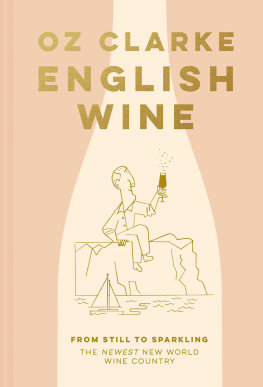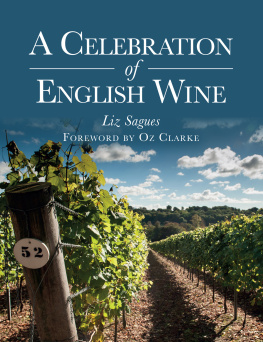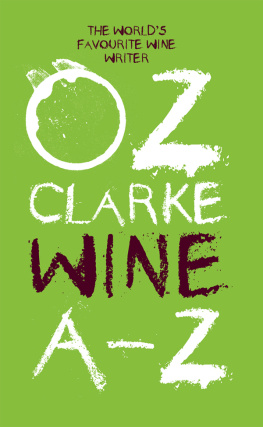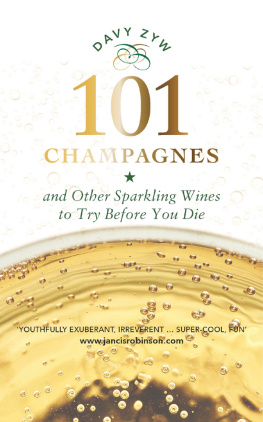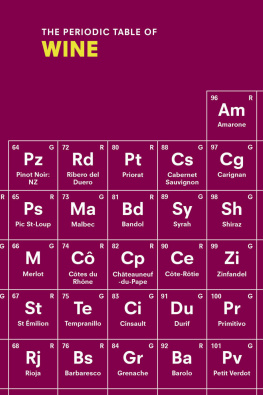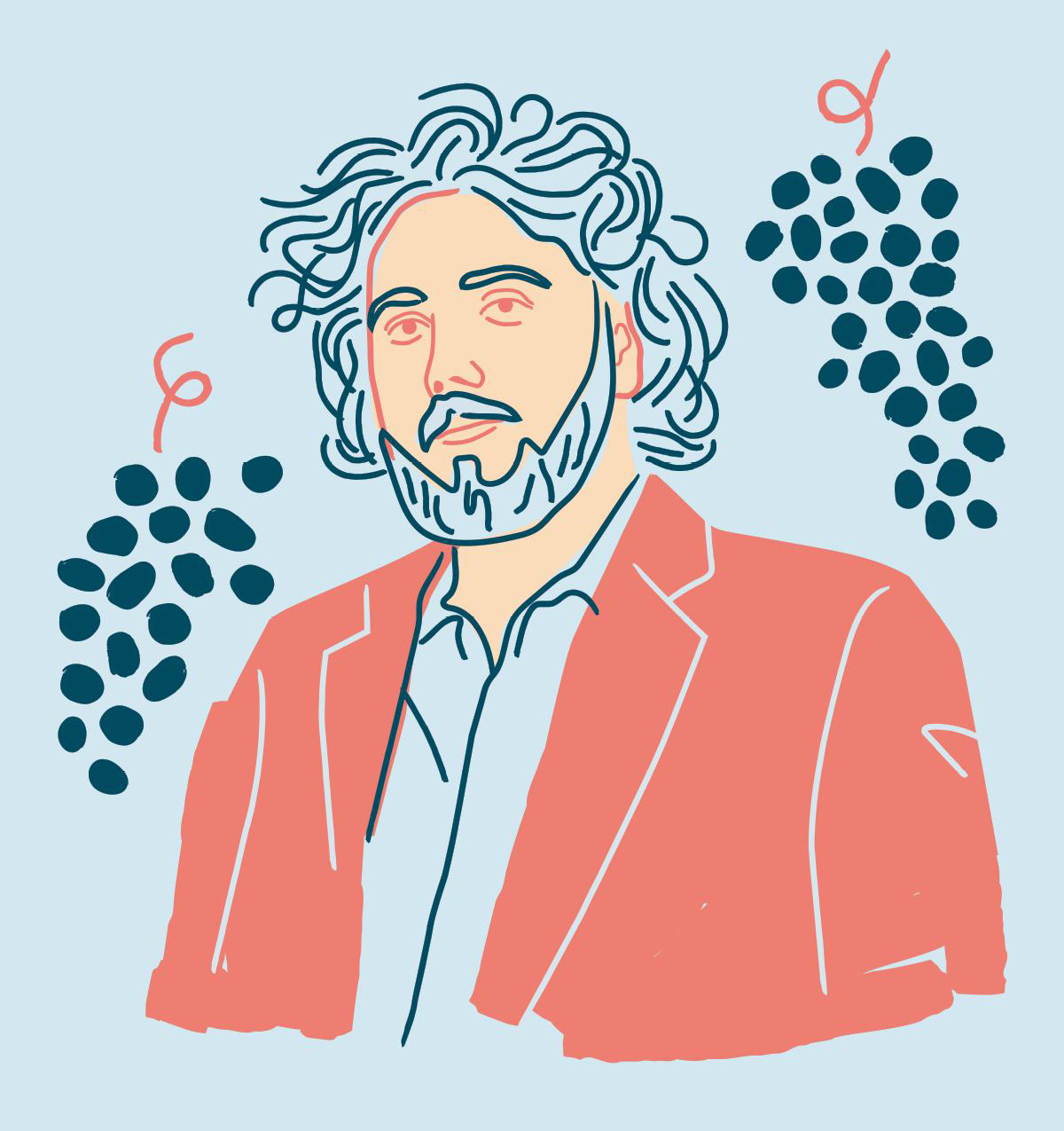Acknowledgments
Most of this book was written in the midst of the COVID-19 pandemic. Needless to say, the experience of completing a manuscript about sparkling winea category historically associated with celebration and the warmth of connectionoften felt at odds with our new reality of social distancing and isolation. So first and foremost, thank you to my wife, Adele, for your unconditional love, support, and friendship and for reminding me that its always the right time for Champagne. This book is dedicated to you.
Thank you to the entire team at Ten Speed Press, but especially to my brilliant editor, Ashley Pierce, for bringing this book to life, and for all your guidance, patience, and insight along the way. Thanks also to Annie Marino, for your invaluable work behind the scenes, and to Nick Hensley, for gracing these pages with such incredible illustrations.
To Talia Baiocchi, my friend and editor at PUNCH, for sticking with me all these years, for perpetually pushing me to dig deeper, and for your special knack for seeing the bigger picture. All writers should be so lucky to rely upon editors like you.
Finally, to my parents, Rich and Jackie, for always believing in me and my writing and for never doubting that this weird hobby of mine would ultimately amount to something. Youve been there for me every step of the way.
About the Author
Zachary Sussman is a Brooklyn-based wine writer and the author of The Essential Wine Book ( Ten Speed Press, 2020). His work has appeared in Saveur, Wine & Spirits, The World of Fine Wine, Food & Wine, and WSJ. Magazine, among many other publications. He is a regular contributor to PUNCH and was formerly named the Louis Roederer Mont Blanc Emerging Wine Writer of the Year.
Appendix I
Where to Buy Sparkling Wine
Most, if not all, of the bottles recommended in this book come from independent and family-run producers who make their wines on a human scale. It is only natural, then, that the best places to track them down will be boutique retailers specializing in small-scale, artisanal wines. Following are a handful of the countrys top shops, many of which take online orders and ship out-of-state.
Arlequin Wine Merchant, San Francisco, CA
The Austin Wine Merchant, Austin, TX
Bacchanal Wine, New Orleans, LA
Chambers Street Wines, New York, NY
Crush Wine & Spirits, New York, NY
Diversey Wine, Chicago, IL
Division Wines, Portland, OR
Domaine LA, Los Angeles, CA
Domestique Wine, Washington, DC
Flatiron Wine & Spirits, San Francisco, CA, and New York, NY
Henry & Son, Minneapolis, MN
Kermit Lynch Wine Merchant, Berkeley, CA
K&L Wine Merchants, Hollywood, Redwood City, and San Francisco, CA
Leon & Son, Brooklyn, NY, and Grand Rapids, MI
Lou Wine Shop, Los Angeles, CA
Ordinaire Wine Shop & Wine Bar, Oakland, CA
Perman Wine Selections, Chicago, IL
Tinys Bottle Shop, Philadelphia, PA
Vine Wine, Brooklyn, NY
The Wine Bottega, Boston, MA
The Wine House, Los Angeles, CA
Appendix II
Importers to Know
The unprecedented array of sparkling wines were lucky enough to choose from today would not be possible without the intrepid importers and distributors responsible for championing artisan winemakers and bringing their bottles to US shores. Keep an eye out for the following names; their presence on a bottles back label guarantees youre getting something good.
Avant-Garde Wine & Spirits
Becky Wasserman Selections
Circo Vino
Coeur Wine Company
David Bowler Wine
De Maison Selections
Grand Cru Selections
Jenny & Franois Selections
Jos Pastor Selections
Kermit Lynch Wine Merchant
Louis/Dressner Selections
Martines Wines
MFW Wine Co.
PortoVino
Polaner Selections
The Rare Wine Co.
Rosenthal Wine Merchant
Schatzi Wines
Selection Massale
Selections de la Via
Skurnik Wines & Spirits
Super Glou
T. Edward Wines & Spirits
Transatlantic Bubbles
Vom Boden
Weygandt-Metzler Importing
Zev Rovine Selections
Appendix III
Sparkling Wine Glossary
Atmospheric pressure: Measured in units called bars, atmospheric pressure refers to the strength of the C0 gas inside a bottle of sparkling wine. The higher the number of bars, the stronger the wines carbonation will be. Most Champagne-method wines come in at six bars of pressure, whereas the softer bubbles in a bottle of pt-nat or Prosecco generally register between three and four.
Autolysis: As a wine spends time in contact with its lees (the deposit of yeast left over after fermentation), a complex chemical reaction occurs known as autolysis, during which the yeast cells break down and release all kinds of flavorful proteins, amino acids, and carbohydrates into the wine. The resulting rich, nutty, brioche-like tastes and smells (what wine nerds call autolytic character) is a hallmark of Champagne and other traditional-method wines.
Base wine: To make most sparkling wines, you first need to make a still wine known as the base wine, or what the Champenois call a vin clair. By refermenting that base winein tank or in bottle, as the case may beit is transformed into a sparkling one.
Blanc de blancs: Originally coined in Champagne, where it almost always indicates a 100 percent chardonnay-based wine, blanc de blancs has become a universal term for a sparkling wine made exclusively from white grapes.
Blanc de noirs: A sparkling wine made from the clear juice of red-skinned grapes.
Brut: Indicates a dry sparkling wine. In Champagne, that means fewer than 12 grams of residual sugar per 1 liter of wine.
Crmant: An umbrella term for French bubbly made in the Champagne method from areas outside Champagne (see ).
Disgorgement: The process of removing the deposit of dead yeast cells from the neck of a bottle of sparkling wine, or what the French call dgorgement. When listed on a wines back label, the disgorgement date tells you when the wine was bottled (particularly useful information for gauging the age of nonvintage bottles of bubbly).
Dosage: The practice of adding sweetener (sugar or a mix of sugar and wine) to Champagne and other sparklers before bottling to balance the underlying acidity of the wine.
Frizzante: Italian for softly sparkling, frizzante is the equivalent of French ptillant. Semisweet Moscato dAsti (see ) falls in this category.
Grower: A typically small-scale, independent winemaker who produces sparkling wine from his or her own vineyards. Most commonly associated with the revolutionary movement in Champagne, the term is now widely applied across the globe.
Liqueur de tirage: The solution of wine, yeast, and sugar that is added to the still base wine to cause the secondary fermentation that creates the bubbles in a Champagne-method wine.
Nonvintage: Often abbreviated to NV, this term designates a sparkling wine that consists of a blend of multiple past vintages. Historically, the NV offering would represent a Champagne houses entry-level bottling, but thats increasingly no longer the case today.
Reserve wine: The portion of still wine (or more often, blend of wines) held back from exceptional vintages that is blended with the current vintage to produce a nonvintage sparkling wine.
Spumante: The Italian term for a fully effervescent wine. For reference, Franciacorta (see ) is a spumante sparkling wine.
Vintage: A sparkling wine sourced entirely from the fruit of a single years harvest. Released only when the vintages are outstanding, these wines often represent the top bottlings in a producers portfolio.
Next page



